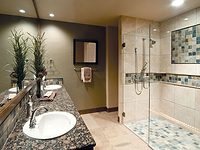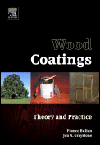This is the ninth in a series of articles regarding the ‘Nuts and Bolts’ of formulating. It is intended to help formulators new to the industry,those who have changed jobs within the industry or simply as a refresher.
Volatile organic compound (VOC) regulations are driving changes in coating formulations to waterborne technology or to higher solids in solventborne systems. The first commercial-scale application of the waterborne basecoat in the automotive industry started in the mid-1980s. Since then, the performance and ease of application of waterborne basecoats have improved rapidly; along with the push from regulations, waterborne basecoats now take up more than 80% of the total basecoat market in Western Europe. In North America, roughly 55% of OEM basecoats and 20% of refinish basecoats are waterborne.
Although waterborne coatings possess some intriguing advantages, there are difficulties that have to be overcome before successful application can be made. One of the most important problems is the control of the rheology, which determines the quality and appeal of the final film. A typical waterborne basecoat shear-thinning profile, and the ranges of shear rate that a basecoat would receive at each coating process are shown in Figure 1.

|
| Figure 1 Click to enlarge |
Challenges of Formulating Waterborne Basecoats
Basecoat rheology should be carefully designed for a particular application such that the performance of the paint is superior during the entire handling cycle, from storage to spray application and drying. The required rheology should enable the basecoat to have a high viscosity during storage, which leads to minimal settling. Under moderate agitation and during circulation, the viscosity should be low to allow the basecoat to be easily pumped. At the spraying gun or bell, the viscosity should be very low so that the paint can be properly atomized. As soon as the paint is sprayed on to the target, the viscosity should build quickly to prevent paint from running or sagging. However, the viscosity should still be low enough to enable the paint to level off, providing a smooth film.
Another important role for rheology additives in a basecoat is to help achieve desired colors that give the sharpest aesthetics. A properly designed rheology package should prevent floating/flooding and mottling. In a basecoat containing a specialty pigment such as aluminum flakes or pearlescent pigment, along with binder system, rheology additives are the key tools to help control flake alignment during flash-off and drying periods. Properly oriented pigment flakes not only increase hiding and durability of the coating film, they also bring out the maximum beauty of these expensive pigments: sparkling effect, maximum face brightness and high flop.
Common Rheology Additives in Waterborne Basecoats
It is important to understand that a paint formulation as a whole defines the final paint’s rheological behavior. A polymer solution affects the high-shear rate viscosity. As molecular weight of the polymer increases, high-shear rate viscosity of the system increases. Emulsion-type binders often show more thixotropic behavior as compared to polymer solutions. Their shear rate versus viscosity relations are impacted more by particle size and solids of emulsion solutions rather than molecular weight of the polymer itself. Heavy inorganic pigments tend to raise high-shear rate viscosity; high pigment loading of organic pigments and carbon blacks tends to raise low-shear rate viscosity. In solventborne basecoats, microgels, waxes, bentonite and cellulose acetate butyrates (CABs) are commonly used as rheology modifiers.
One of the advantages of using microgels is the low viscosity at higher levels of non-volatile content in a coatings formulation. Since microgels are prepared as non-aqueous dispersions (NADs), this is a category not available to waterborne formulations. Different from other rheology modifiers, a CAB solution in a common solvent exhibits near-Newtonian flow behavior. At the moment a basecoat is spray-applied to an object, the Newtonian characteristic of CABs help flow and leveling. Due to a rigid cellulosic backbone, CABs possess extremely high glass transition temperatures (Tg) as compared to other polymers used in coatings.
High Tg of CABs results in a rapid viscosity build-up within a short period after a basecoat is applied, leaving no time for coated film to sag, as well as no room for pigment to swim. The combination of these unique properties provides a basecoat formulation with excellent flake orientation and color uniformity, which leads to quick dry-to-touch time and improved strike-in resistance in a wet-on-wet application. This will enable the basecoat to have superior flow and leveling without compromising sag resistance.
For waterborne basecoats, instead of microgel, there are a variety of alkali-swellable emulsion-type rheology modifiers out there. Wax dispersions and bentonites are also available.
Alkali-Swellable Emulsions – Commonly used are hydrophobically modified alkali-swellable acrylic emulsions (HASE) and hydrophobically modified ethoxylate urethanes (HEUR). Viscalex™ HV30 is a very efficient thickener in this category available from BASF. Another type in this category are rheology-modified acrylic core/shell dispersions such as Setalux™ 6803 AQ-24 available from Nuplex. The dispersed particles consist of a hydrophobic core and an acid functional alkali-swellable shell. Upon neutralization with amines, the resin develops its unique, strong pseudo-plastic or thixotropic character essential in a waterborne basecoat.
Wax Dispersions – There are polyamide-based aqueous dispersions such as Disparlon™, available from King Industries; and modified polyethylene dispersions such as Aquatix™ 8421, available from BYK. In general, wax dispersions are not as effective as alkali-swellable types, and they often increase high shear viscosity, which is undesirable.
Bentonite – Bentonite refers to a family of layered silicate clays. Silicate clay is insoluble in water but hydrates and swells to give clear and colorless colloidal dispersion. At very low concentration in water, highly thixotropic gels can be produced. A well-known product in this category is Laponite™ RD, available from Rockwood Additives.
Waterborne Cellulose Ester – Eastman Chemical has recently commercialized a waterborne cellulose ester, Solus™ 3050 performance additive, in an effort to pursue the benefits of CABs in solventborne formulations from waterborne chemistry. Performance benefits of Solus™ 3050 include superior flow and leveling, optimal metallic flake control and better redissolve/strike-in resistance.
Summary
The protective coating industry is in a transition phase geared towards waterborne and high solids formulations. Selecting the right rheology package is the key to formulating optimized waterborne basecoats that possess desirable application fitness and best finishing appearance.
For more information, visit www.eastman.com.







Report Abusive Comment